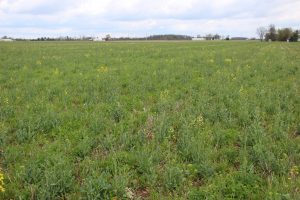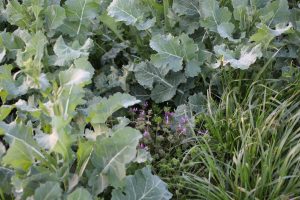Agronomy, Conservation, Homepage Slider
Improving Photosynthetic Potential
By James Hoorman, Hoorman Soil Health Services
Farmers do not often think about how their management practices can influence the rate of photosynthesis. Photosynthesis has always been assumed to be constant, but it is not. Photosynthesis does not occur at a constant rate, it varies each second, depending on light, carbon dioxide (CO2), water availability, temperature, leaf chlorophyll content, microbial impact on plant nutrient availability, and genetics. Some factors can be manipulated directly, others indirectly. Farmers can manage many of these factors, but not all, to improve yields.

In a given year, water may be either limited or in excess supply while temperatures can also be extreme, either too cold or too hot. These factors often reduce nutrient cycling, resulting in reduced plant growth and yield. Soil compaction and poor soil structure can have a direct impact on microbial activity plant nutrition, water availability, soil temperature, and CO2 storage. Fall tillage is a major disrupter of the carbon and water cycle. Every time a soil is tilled, CO2 is lost to the atmosphere within minutes and most of it is deposited eventually in our oceans. Most of the nutrients that are released with tillage also are lost, either in surface water (example nitrogen or phosphorus) or to the atmosphere (nitrogen). The best way to preserve the carbon and nutrients in the soil is to plant fall cover crops, restoring the natural biological cycle.
When the soil environmental and crop nutrition is optimized, plants can photosynthesize much more rapidly than is commonly considered normal. An extreme example comes from a Netherlands greenhouses where tomato yields are reaching 890,000 pounds (445 tons) per acre or 20 pounds tomatoes per square foot. USA field tomato yields range from 20-50 ton per acre. Greenhouse growers have the ability to manipulate lighting, CO2 levels, plant nutrition, and genetics to maximize crop yields. Farmers may not be able to manipulate lighting directly, but crop density, population, and spacing can be manipulated. Farm management practices have a direct impact on CO2 levels, microbial activity, plant nutrition, and genetic potential.
Farmers often manipulate their fields to produce lower yields by creating field conditions that are challenging and stressful. Farmers can also improve the soil environment, increase the photosynthetic rate, and improve yields by creating a healthier soil environment. Adding cover crops increases carbon sequestration and increases plant roots turnover, leading to more CO2 for plant growth.  About 60-80% of all plant carbon is recycled with only 20-40% being stored in the soil. Sequestering carbon is a slow process but it improves soil aggregation, drainage and higher microbial activity leading to higher nutrient availability.
About 60-80% of all plant carbon is recycled with only 20-40% being stored in the soil. Sequestering carbon is a slow process but it improves soil aggregation, drainage and higher microbial activity leading to higher nutrient availability.
For example, in corn production it takes 100 pounds of CO2 per day to produce 200-bushel corn. If all the CO2 came from the atmosphere (at 410 ppm CO2) it would take 32 cubic acres of air per acre of corn to get that result. However, since plant roots take in oxygen and exude CO2, the soil CO2 atmospheric concentration increases to 3,000 to 10,000 ppm CO2. The cool night temperatures raise soil CO2 levels even further to 20,000-30,000 ppm which supplies most of the daily CO2 needs for plant growth. This CO2 level results in only 10-20% of our possible full photosynthetic rate. To get major crop yields improvements, researchers estimate that farmers need to improve their photosynthetic rate above 60% compared to our current 10-20% photosynthetic rate.
Unfortunately, getting your soil in shape with cover crops and reduced tillage can be a slow process. It generally takes 3-7 years to make the transition. Soil health is a journey that takes time to succeed.  Soil carbon at the soil surface increases first. Soils start to aggregate or obtain better soil structure so that water can infiltrate. Then your soil will start to hold more water and the added carbon will sequester or hold more soil nutrients. This leads to environmental improvements in air and water quality.
Soil carbon at the soil surface increases first. Soils start to aggregate or obtain better soil structure so that water can infiltrate. Then your soil will start to hold more water and the added carbon will sequester or hold more soil nutrients. This leads to environmental improvements in air and water quality.
As the photosynthetic rate improves, root exudation increases which feeds the microbes and improves nutrient cycling. With higher photosynthetic rates, plants become healthier so insect pests and diseases decline. Healthier plants canopy faster and reduce weed populations due to increased competition for light and soil nutrients. Healthier plants and soils respond better to microbial inoculants and low salt fertilizers. Generally, healthier plants produce more lipids (fats) and the grain has higher nutrient density; all leading to much higher crop yields. The end result is that improving soil health leads to better yields, higher profits, and higher quality nutrient dense food while protecting the environment.